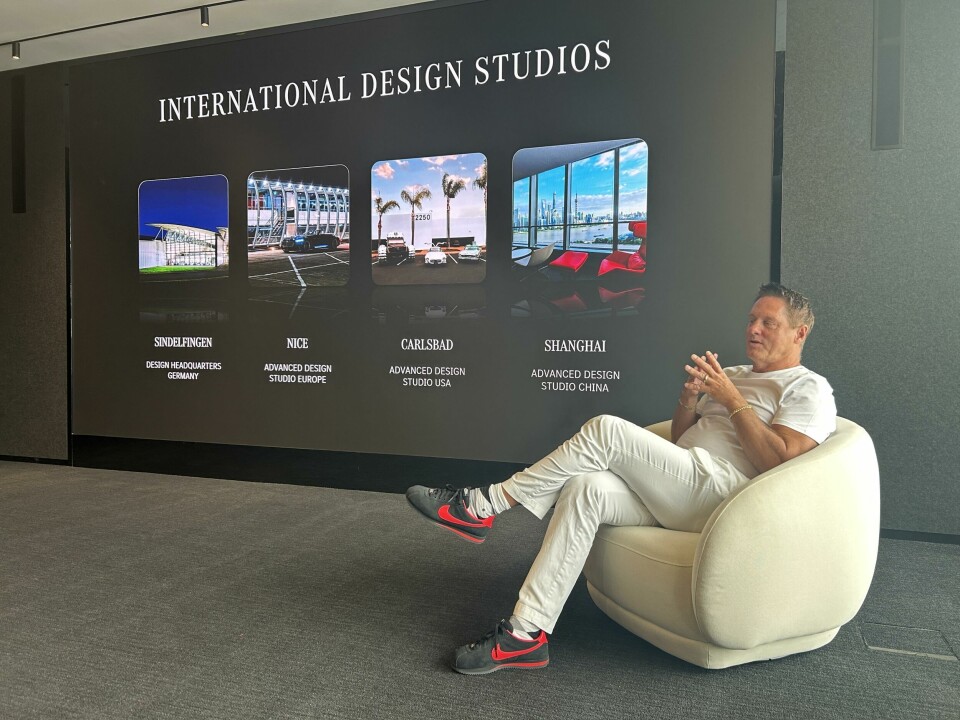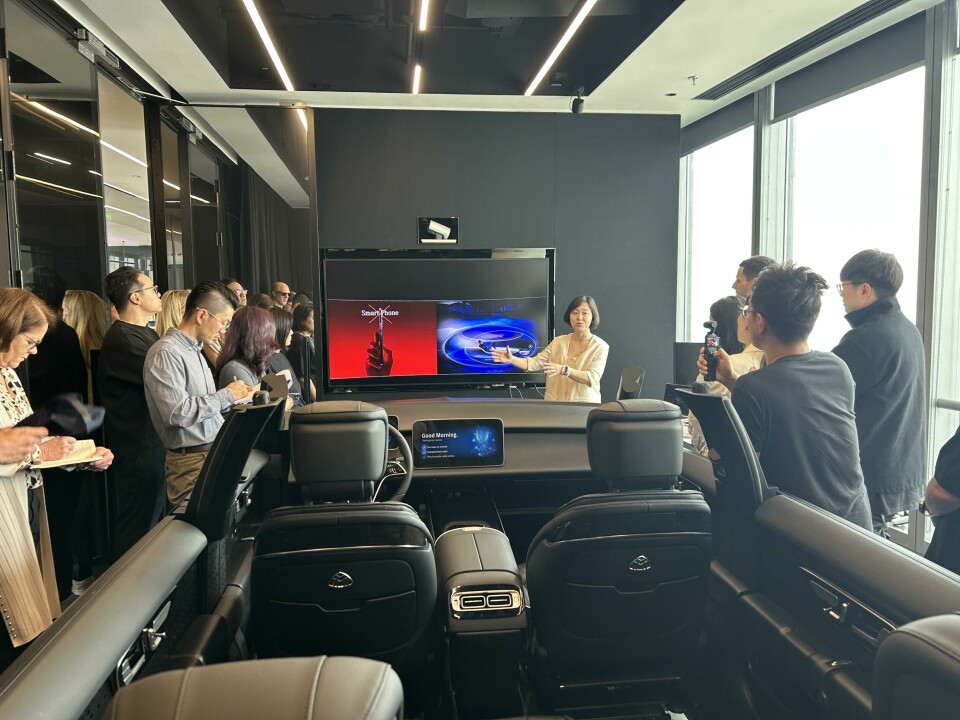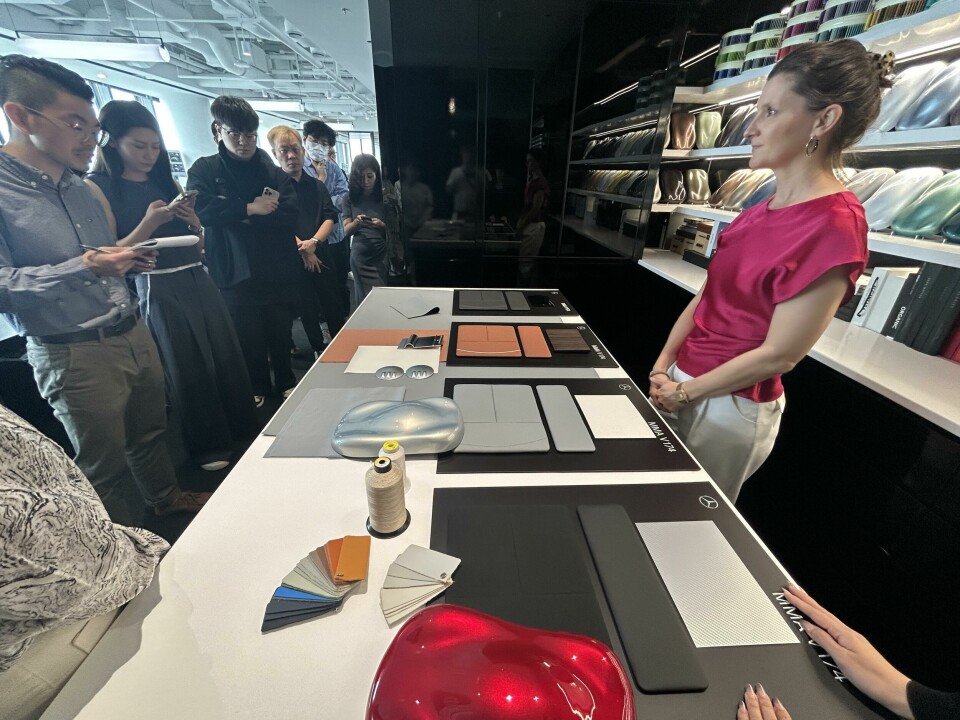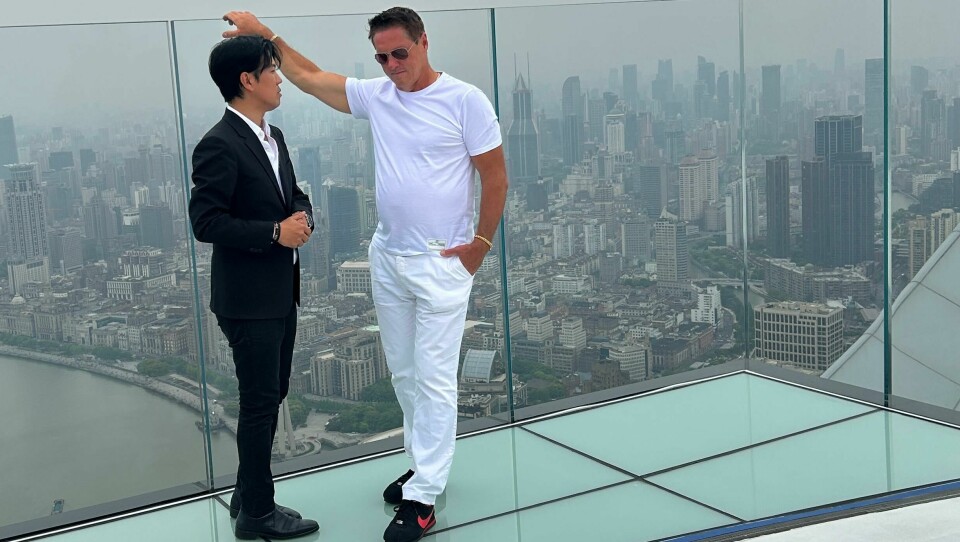
Exclusive: Inside Cloud 46, Mercedes-Benz’s new Shanghai studio
Mercedes-Benz has a new studio in Shanghai way up on the 46th floor of a high-rise overlooking the famous Bund. With spectacular views plus a helipad on the roof, Cloud 46 is a strong commitment to mastering the Chinese market
Way, way up high in a skyscraper in Shanghai is Mercedes-Benz newest international design centre. Called Cloud46 (it is on the 46th floor), the German carmaker claims, not unreasonably, that it is the highest studio in the world. To ascend to such heights, staff must transfer from various lifts making an efficient journey more about luck than judgement. CDN visited the newly minted space during the 2025 Shanghai Auto show where design boss Gorden Wagener led us and a selection of international journalists through the space culminating in a rooftop ribbon-cutting ceremony.
Mercedes-Benz had previously opened an R&D Centre in 2022 to go with the Beijing engineering centre but with the opening of a new international design centre (IDC) in China’s most creative and cosmopolitan city, the German carmaker clearly believes the answer to flagging sales is a better understanding of the local market.
The Shanghai studio is the fourth in the German carmakers IDC portfolio. Outside of the Renzo Piano designed HQ in Sindelfingen, the others include Carlsbad in California headed up by Michael Gebhardt and Nice in the south of France run by Alexandre Malval. Cloud 46 will be overseen by Joel Baek.

“Every design centre brings a unique perspective. What’s especially exciting is the healthy competition among our studios,” Wagener says. “While the headquarters often focuses on forward-looking and concept designs, about 50% of the projects we work on are production models, and all studios are encouraged to present competing ideas. This internal competition drives innovation and helps us identify the best design solutions. It’s always a pleasure to see teams pushing boundaries.”
Why Shanghai? “First, because society here is progressing extremely quickly. We need to understand the differences between China and Germany, Europe, and the US. Second, China is Mercedes’ largest and most important market. Third, we want to understand the cultural heritage — to see how it impacts our products and customers.”
As you would expect, the Shanghai studio is purely digital – save for an interior buck such a dizzying address prohibits clay modelling. Not unless you had the mother of all service elevators.

The studio will work across two brands: Mercedes-Benz and Smart. For the former, scope covers advanced exterior and interior design plus China-specific advanced design in CMF and UX. For Smart the work will include all of the aforementioned but will extend to production development with joint venture partner Geely.
In accordance with the remit to understand and create products tailored to local tastes, there is a good amount of space dedicated to colour and materials as well as design in the digital space. CDN joined the tour in time for the interior design presentation alongside said interior buck.
Led by interior head Xiaoming Xu, the presentation took the audience through the creative strategy that brings different strands – interior spaces that adapt to moods, organic design and immersive experiences – together. “We call the space digital romance where we combine very romantic sculptural lines, with an immersive digital experience,” Xiaoming said.

“We are looking at incorporating elements of tea culture for a serene atmosphere, like a zen space and utilising fluid lines and sculptural forms to reflect Chinese cultural heritage.”
Also in attendance from the mothership in head of colour and trim was Belinda Günther, mildly jetlagged from her flight in from Germany, but nevertheless on the ball alongside her head of CMF in Shanghai Kate Zhong.
The most pressing questions premium brands need to answer concern how to adapt their products to suit regional tastes, if at all. Mercedes-Benz makes a good case study here, the carmaker’s “Longevity Editions” are Chinese specific featuring colour schemes and materials not available in other markets.
“The colours and test versions of interior and exterior colours you see are exclusive to China. We also make sure to listen to the situation in China to understand the needs of Chinese customers, while still aligning with our Mercedes-Benz brand identity,” explained Günther.

Riffing off the interior design work, Gunther explained her team’s material experiments with paper, aligning with the “zen” design aspirations of Xiaoming. “One of the highlights we want to share is our truly fresh decorative design. This is completely new in the automotive industry — a brand-new material: paper. The internal rotating trellis design was inspired by Zen gardens, prompting us to focus on basic elements.”
Günther’s colleague Zhong expanded on the team’s material exploration: “We aim for minimalist design — retaining only the essentials. The paper material, with its unique pattern, gives a subtle, breathing, lifelike quality. Its texture is also very pleasant. We draw inspiration from the fashion and luxury industries. For the CLA, we’ve made every effort to incorporate fashion-world influences, making it luxurious, youthful, dynamic, innovative, and yet still classic.”
The new studio feels like the right move for Mercedes-Benz. The OEM is still a very strong brand in China, but sales have declined for two years running. The days of Chinese consumers chasing European luxury are over but there is certainly mileage in European excellence tailored to an increasingly discerning local audience. To pull that off, you have to be as close as you can be to your customers. To that end, Cloud 46 could pay dividends.



